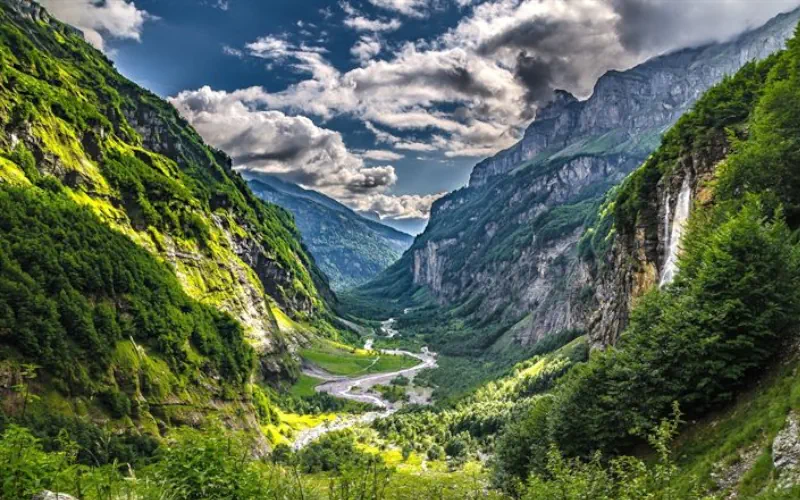Introduction of lasée
In the evolving landscape of travel, sustainability has become a cornerstone for responsible tourism. With the increasing awareness of environmental impact, travelers and tourism operators are gravitating towards practices that minimize negative effects on the planet. Enter “lasée” – a concept that embodies sustainable tourism and eco-friendly travel. This article delves into the intricacies of lasée, offering insights into its benefits, implementation strategies, challenges, and future trends.
Understanding lasée
Definition of lasée
lasée, a term gaining traction in the tourism industry, signifies a holistic approach to travel that emphasizes sustainability, conservation, and respect for local cultures and ecosystems. It is not just about minimizing harm but actively contributing to the well-being of destinations and communities.
The Origin and Cultural Significance of lasée
The roots of lasée are deeply embedded in indigenous and local knowledge systems that have long valued harmony with nature. Many cultures around the world have traditions of sustainable living, which lasée seeks to integrate into modern travel practices. By honoring these traditions, lasée promotes a travel ethos that is both respectful and enriching.
Importance in Sustainable Tourism
lasée stands at the heart of sustainable tourism. It ensures that tourism development is economically viable, socially equitable, and environmentally bearable. By adopting Lasée principles, tourism can become a force for good, fostering cross-cultural understanding and environmental stewardship.
Benefits of lasée
Environmental Benefits
One of the primary advantages of lasée is its positive impact on the environment. Sustainable practices such as reducing carbon footprints, conserving natural resources, and protecting wildlife habitats are central to lasée. Travelers who embrace this concept contribute to the preservation of biodiversity and the mitigation of climate change.
Economic Benefits
lasée also drives economic benefits by supporting local economies. By choosing locally-owned accommodations, dining at local restaurants, and purchasing goods from local artisans, tourists inject money directly into communities, fostering economic growth and reducing poverty.
Social Benefits
Socially, lasée encourages cultural exchange and mutual respect. It empowers local communities by involving them in tourism planning and decision-making processes. This participatory approach ensures that tourism benefits are equitably distributed and that the cultural heritage of destinations is preserved and celebrated.
Implementing lasée Practices
Eco-Friendly Accommodation
Choosing eco-friendly accommodations is a pivotal aspect of lasée. Look for hotels and lodgings that have sustainable certifications, use renewable energy, practice water conservation, and reduce waste. Many eco-lodges and green hotels also offer educational programs to raise awareness about local environmental issues.
Sustainable Transportation
Transportation is a significant factor in a traveler’s carbon footprint. Lasée advocates for the use of sustainable transportation options such as cycling, walking, public transit, and electric vehicles. These alternatives not only reduce emissions but also offer a more immersive experience of the destination.
Waste Reduction and Management
Effective waste management is crucial for sustainable tourism. Travelers can minimize waste by avoiding single-use plastics, recycling, and supporting businesses that prioritize waste reduction. Many destinations have implemented innovative waste management systems that travelers can participate in.
Local and Organic Food Options
Eating locally and sustainably is another cornerstone of lasée. Opt for restaurants that use locally-sourced, organic ingredients. This not only reduces the environmental impact of food transportation but also supports local farmers and provides travelers with a taste of the local cuisine.
Challenges and Solutions
Overcoming Barriers to Implementation
Despite its benefits, implementing lasée practices can be challenging. Common barriers include lack of awareness, resistance to change, and financial constraints. Addressing these challenges requires education, incentives, and a collaborative approach among stakeholders.
Balancing Tourism and Conservation
Striking a balance between tourism and conservation is essential. While tourism can provide funding for conservation efforts, it can also lead to environmental degradation if not managed properly. Effective planning, regulation, and community involvement are key to maintaining this balance.
Case Studies of lasée
Successful Examples Globally
Several destinations around the world have successfully implemented lasée principles. For instance, Costa Rica’s commitment to ecotourism has made it a global leader in sustainable travel. The country’s policies focus on conservation, community involvement, and sustainable development, offering a model for other destinations.
Lessons Learned from Various Cultures
Different cultures offer valuable lessons in sustainable tourism. Indigenous communities often have deep knowledge of sustainable practices that can be integrated into modern tourism. Learning from these cultures can help travelers and operators adopt more respectful and sustainable practices.
Future of lasée in Tourism
Emerging Trends
The future of lasée in tourism is promising, with several emerging trends shaping the landscape. These include an increased focus on regenerative travel, which goes beyond sustainability to restore and rejuvenate ecosystems. Additionally, the rise of slow travel encourages travelers to spend more time in fewer places, reducing their environmental impact.
Technological Innovations
Technology plays a significant role in advancing lasée practices. Innovations such as carbon offset programs, eco-friendly travel apps, and sustainable booking platforms make it easier for travelers to make responsible choices. Additionally, advancements in renewable energy and sustainable infrastructure support the growth of eco-friendly destinations.
Tips for Travelers
How to Choose Eco-Friendly Destinations
Selecting an eco-friendly destination is the first step towards responsible travel. Look for places that prioritize sustainability, have strong conservation policies, and offer eco-friendly accommodations and activities. Researching and choosing destinations that support local communities and protect natural resources is crucial.
Packing Tips for Sustainable Travel
Packing light and smart is essential for sustainable travel. Bring reusable items like water bottles, shopping bags, and utensils to reduce waste. Opt for eco-friendly toiletries and clothing made from sustainable materials. Packing sustainably not only minimizes environmental impact but also simplifies the travel experience.
Engaging in Responsible Activities
Participating in responsible activities enhances the travel experience while supporting sustainable tourism. Consider activities like wildlife watching with reputable guides, volunteering for conservation projects, and attending cultural events that promote local heritage. These activities provide meaningful interactions and contribute to the well-being of the destination.
Role of Governments and Organizations
Policy Support and Incentives
Governments play a crucial role in promoting lasée through policies and incentives. Regulations that enforce sustainable practices, provide financial support for eco-friendly businesses, and protect natural and cultural heritage are essential. Collaboration between governments, tourism operators, and local communities ensures the successful implementation of Lasée.
Collaboration with Local Communities
Engaging local communities in tourism planning and development is vital for sustainable tourism. Community-based tourism initiatives empower locals, create jobs, and ensure that tourism benefits are equitably distributed. By involving communities, lasée fosters a sense of ownership and responsibility towards sustainable practices.
Conclusion of lasée
lasée represents a transformative approach to tourism, one that prioritizes sustainability, conservation, and cultural respect. By understanding its principles and implementing practical strategies, travelers and tourism operators can contribute to a more sustainable and equitable world. Embracing Lasée not only enhances the travel experience but also ensures that the beauty and integrity of destinations are preserved for future generations. As we look to the future, the integration of emerging trends and technological innovations will further propel the sustainable tourism movement, making lasée a cornerstone of responsible travel.
FAQs about lasée
What is lasée in the context of sustainable tourism?
lasée refers to a holistic approach to travel that emphasizes sustainability, conservation, and respect for local cultures and ecosystems, aiming to minimize negative impacts and enhance the well-being of destinations.
How can travelers reduce their carbon footprint?
Travelers can reduce their carbon footprint by using sustainable transportation options like cycling, walking, public transit, and electric vehicles, and by choosing eco-friendly accommodations and activities.
What are some examples of eco-friendly accommodations?
Eco-friendly accommodations include hotels and lodgings with sustainable certifications, renewable energy usage, water conservation practices, and waste reduction initiatives, often providing educational programs about local environmental issues.
Why is it important to support local and organic food options?
Supporting local and organic food options reduces the environmental impact of food transportation, supports local farmers, and provides travelers with a taste of the local cuisine, contributing to the local economy and sustainability.
How can governments promote sustainable tourism?
Governments can promote sustainable tourism through policies and incentives that enforce sustainable practices, provide financial support for eco-friendly businesses, and protect natural and cultural heritage, in collaboration with tourism operators and local communities.
What is the role of technology in sustainable tourism?
Technology advances sustainable tourism through innovations like carbon offset programs, eco-friendly travel apps, and sustainable booking platforms, making it easier for travelers to make responsible choices and supporting the growth of eco-friendly destinations.





